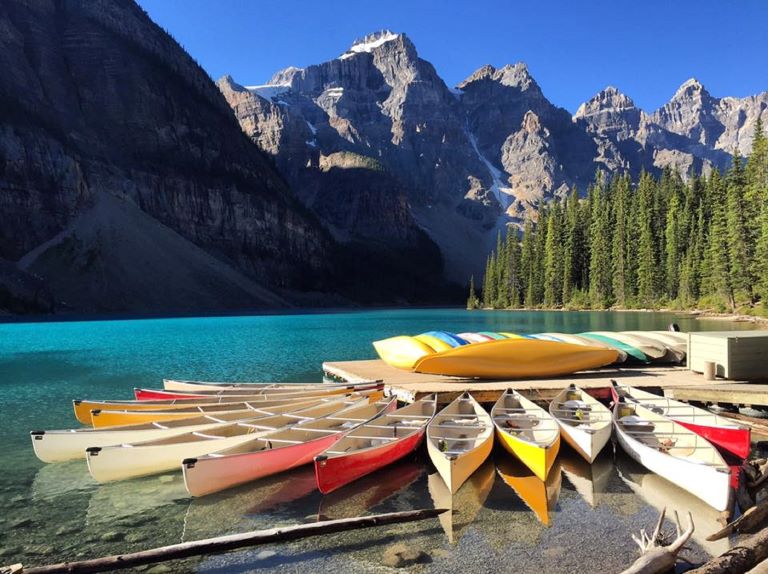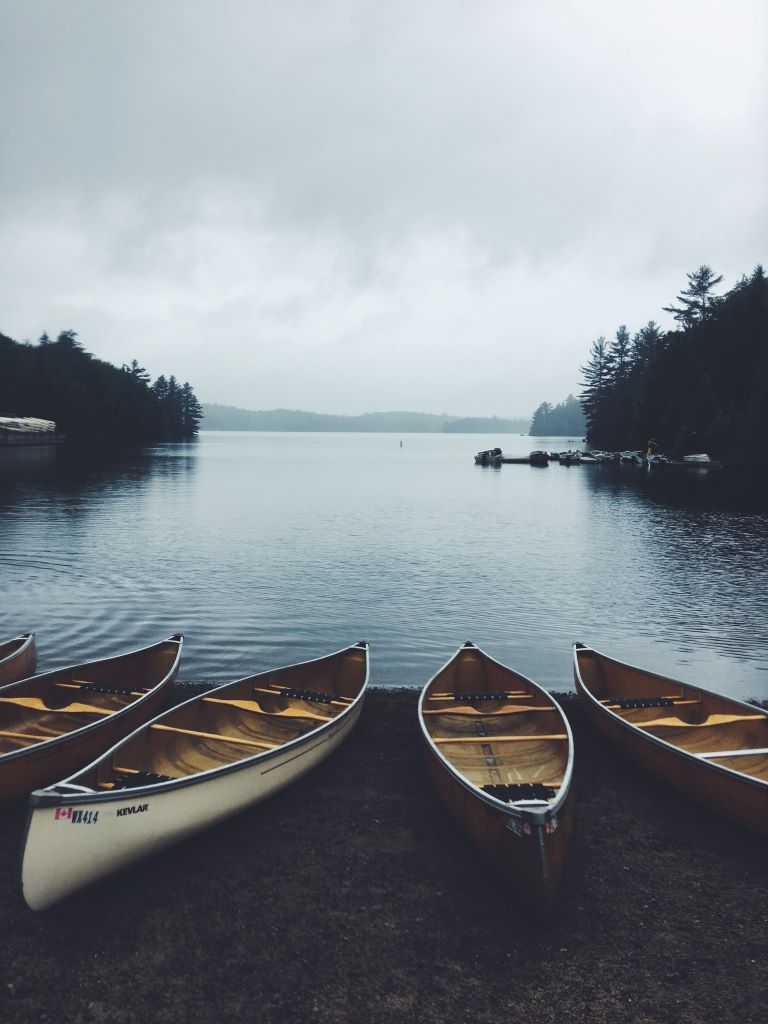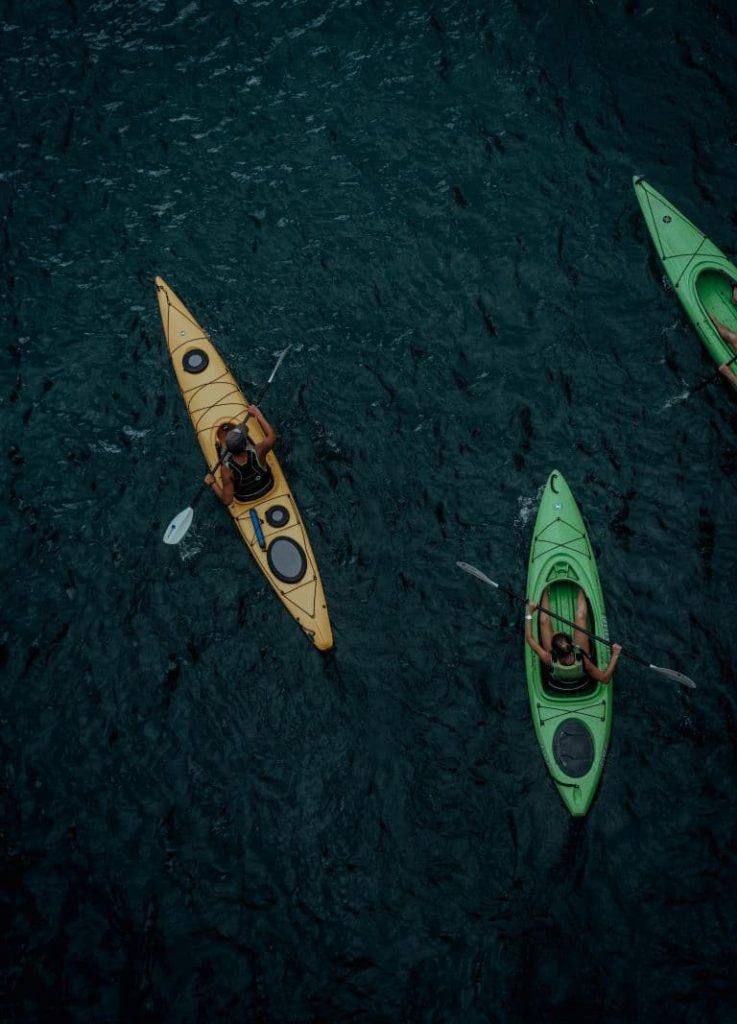
The beginnings of the canoe vs kayak
Some debates can never quite be settled no matter how long or hard you make your case.…. and you’d be hard pressed to find one older than the canoe vs kayak for water paddling supremacy.
Their histories are rich, their beginnings are humble. And they have stood the test of time to remain a staple item among water sport adventurers, leisure enthusiasts and camping families all over the world.
Both had beginnings in a world we wouldn’t even recognize today. Likewise, the first paddlers could have never imagined the uses of today’s world.
The canoe and the kayak date back thousands of years and have had a profound impact on the history of civilization as we know it.
These vessels were the first modes of water transportation and without them life today might look a lot different. We might never have reached the version of the world we’ve become accustomed to.
Would exploration and trade have ever been possible without the ability of these small, lightweight boats to enter the rivers and creeks along which communities lived?
Maybe we should blame or credit the canoe and kayak for globalization as we know it today….depending on your perspective of the subject.
Either way both have come to be adored by outdoor enthusiasts all around the world. They bring people together with people. People together with nature. They allow us to explore and unwind along the beautiful waterways in all parts of the world.
In order to start the debate, we first must understand what each vessel has to offer.

What is a Canoe?
A canoe is a narrow open vessel. The first “dugout” canoe, meaning it was hollowed out of a tree, was found in the Netherlands and is believed to be almost 10,000 years old.
Each corner of the world, with people who had never met or even known of their existence, were making their own variation of the canoe with the resources available in their lands.
In the Caribbean, dugout mahogany’s were used. In the North Pacific of North America, it was red and yellow cedars. One of the oldest boats found in Africa, the Dufuna Canoe discovered in Nigeria, was made of African mahogany. These solid one piece vessels offered excellent durability. Plus they could be as large as a tree could offer meaning that multiple people could hop in for the ride.
But, dugout canoes weren’t the only types being developed either. In Australia and other parts of the world, including the Americas, boats were being constructed of a combination of wood barks, hemp glue and mud. The durability wasn’t as good as their counterparts though, usually lasting around two years. As such, they were mostly used for short trips and river crossings. Nevertheless they were a great use of the resources available.
Nowadays, the canoe can also be known as an open canoe or “Canadian” which has been used to distinguish it from the kayak. There are only a few basic parts in its construction.
Basic Canoe Parts
- Canoe Hull: This makes up the largest part of the canoe and can come in one of three cross-sections; flat, shallow arch and shallow vee. Each one will have a bearing on things like the speed and stability of the canoe.
- Canoe Bow: the front of the canoe. It’s pointed shape helps the canoe cut through the water and is an important factor in it’s abilities to glide.
- Canoe Stern: the back of the canoe. It has similar properties and purposes to the bow. It is also where the back paddler or solo paddler will sit.
- Canoe Gunwales: top edge of the canoe running from the bow to the stern. The canoe gunwale provides protection for the top of the hull.
- Canoe Thwarts: horizontal braces to provide support for the walls of the canoe. Typically a canoe will have two thwarts, each one being near the seats. This provides strength where outward pressures will be greatest.
- Canoe Yoke: the middle horizontal brace. Its main purpose is for carrying the canoe solo or portaging. Because of this, it will be placed in the centre of the canoe which helps to maintain balance.
- Canoe Seats: typically seats are made of fabric webbing, aluminum or plastic and are placed at the bow and stern.
Canoe Materials
A canoe is most often made of wood, fiberglass, aluminum or plastic. Each product will have its own advantages and disadvantages which will have an effect on which type of canoe will be best for you.
- Wood canoes are durable and look very appealing. You can imagine yourself floating down the river in a beautiful wood canoe, maybe catching a few fish on a perfect summer day. However, wood is heavy and the hand craftsmanship is labour intensive, making them expensive. The extra weight also causes them to be slower in the water and additionally makes paddling a little harder.
- Fiberglass canoes are lightweight and inexpensive. This combination makes them some of the more popular types on the market. They also do really well on the speed spectrum, meaning you can fly across that lake or down river. If you’re taking a long canoe portage trip where you need to make distance in a short amount of time, a fiberglass composite could be your best friend. The one downside is the durability of the product. The resin coating on the outside of a fiberglass canoe is prone to chipping if it gets banged around. This often makes for ugly patchwork.
- Aluminum canoes at one time were very prominent in the industry because of its durability. But rising costs and more advanced products have pushed aluminum down the manufacturing line. They also don’t measure very well for speed and are quite heavy. Many of today’s canoe trippers are looking for lightweight options, meaning aluminum is often left on the shelf.
- Plastic canoes are durable and inexpensive. However they are quite heavy and slow in the water. They might be a good option at the cottage but the combination of metrics usually means they aren’t ideal for that portaging canoe trip either.

What is a Kayak?
A kayak is a small narrow enclosed watercraft in which the paddler sits in a cockpit. The first kayaks were constructed with stitched seal skin and other animal skins stretched over a wood frame. Their origins date back around 4,000 years and were used for hunting and transport of goods and people.
Basic Kayak Parts
- Kayak Hull: the bottom of a kayak. Kayak hulls come in one of four shapes; rounded, v-shaped, flat and pontoon. Each shape will have a bearing on properties like speed and maneuverability.
- Kayak Deck: the top half of the kayak. It houses the cockpit, storage spaced and carrying handles.
- Kayak Bow: the front of the kayak. It is designed for maneuverability and gliding.
- Kayak Stern: the back of the kayak. It will have similar properties to the bow, although some kayak types will differ.
- Kayak Cockpit: a large whole in the centre of the kayak. This is where the paddler will sit.
- Kayak Hatch: an enclosed storage area for cargo and gear.
- Kayak Carrying Handles: handles attached to the bow and stern of the kayak used for transporting.
Kayak Materials
Kayaks are typically made of one of four products being polyethylene, fiberglass composite, graphite carbon composites or kevlar.
- Polyethylene is durable and inexpensive, however it can be quite heavy, making speed in the water a concern. It can also be heavy for lifting onto a roof rack for transport.
- Fiberglass composites are lightweight, but less durable than plastics. They also come in the middle of the pack for cost.
- Graphite composites are very lightweight with good strength. The downside for graphite composites is that it is very costly to produce.
- Kevlar is the lightest material of the four and has good durability. As the weight decreases, the technology required and therefore costs to produce kayaks increases.
Canoe vs Kayak Difference
To understand why people feel so passionately about which is dominant, you first need to understand what makes a canoe different from a kayak. At first glance, you might think that they both serve the same purpose. They both float on water and are used for travel and leisure right?
Isn’t the only difference that a kayak puts a roof over your legs?
The truth is there are many qualities that make each one unique. And it is in this uniqueness that you can often find the root of the debate. But it will also shine a light on when you should use a canoe and when you should use a kayak.
Some of the main differences between a canoe and kayak lie in the profile of the boat itself.
A canoe allows you to sit up high out of the water with an open top. There are usually two seats and high walls. A single blade paddle is used.
A kayak will have you very low to the water and has an enclosed top so your legs and feet are not exposed. A double bladed paddle is used to maneuver and move the vessel.
Canoe vs Kayak Stability
When it comes to stability it’s hard to argue that the kayak has a major edge. Its low centre of gravity makes it much less prone to tipping over than a canoe in rough waters and high winds.
When you’ve spent time in a canoe in high winds and waves it will have you clutching onto your lifejacket. Kayaks provide much greater resistance and comfort when it comes to stability. When it comes to the canoe vs the kayak, the kayak will feel much safer in terms of stability.
Canoe vs Kayak Pros and Cons
As with anything, you can expect pros and cons for canoes and kayaks too. For each canoe con you will find a kayak pro and vice versa. This is where your individual needs will come into play when choosing between the two.
Canoe Advantages
- Spacious: canoes have more space so you have freedom to move around. The extra space also comes in handy for storing extra gear.
- Comfortable: this ties in with the space available. There is ample room to sit, kneel, stand etc. so that you can get into a comfortable position which you can change often.
- Portaging: canoes are designed to be carried solo which makes portaging much simpler than with a kayak. They can also be very lightweight despite their size.
- Family friendly: canoes can easily fit two adults and one or two children so you can take the family along for a day trip.
- Smooth ride: canoes cut through the water simply and glide extremely smoothly.
- Great for calm rivers and lakes.
Canoe Disadvantages
- Maneuverability: canoes can be more difficult to control especially if solo.
- Stability: Because they sit higher out of the water, capsizing is more likely in a canoe, particularly in rough waters and high winds.
- Gear Protection: The open design means that gear is exposed splashing waves and rainfall.
- Transport: Loading a canoe on a vehicle is difficult to accomplish by a single person.
Kayak Advantages
- Maneuverability: A low centre of gravity and double paddle blade makes tight turns simple.
- Speed and Distance: kayaks slice through waters like butter, meaning you can make excellent time and distance even on a windy day.
- Dry Storage: Extra gear can be stored in the dry storage compartments, meaning it won’t be exposed to waves or weather. Typically there is both a bow storage for larger gear, plus a day hatch for things you’ll need regularly.
- Stability: Performs much better than a canoe in rough waters and winds.
- Versatility: Kayaks have more models available for a wider range of uses.
- Transport: Loading a kayak on the roof of your vehicle has been made easy with specialized roof racks.
Kayak Disadvantages
- Portaging: A kayak’s size and shape makes it difficult to carry solo.
- Comfort: Although with molded seats and backrests they are quite comfortable, there is little room to move around and the only suitable position is sitting.
- Space: The lack of space means that there is little room for extra gear as well. Additionally, most kayaks are solo, although tandems are available.

Canoe vs Kayak Difference Settled
So after all that’s been said about canoes vs kayaks differences, which one reigns supreme?
Well, that depends…..
Clearly, each one has its own set of circumstances for which it becomes the better choice. And that is likely the only answer. That sometimes a canoe is better and sometimes a kayak is better. You need to consider all of the factors to determine which one is right for you. If you’re a beginner trying to decide, think about what you like to do most often.
Do you like to bring the family and dogs along?
Do you enjoy rough waters and thrilling adventures?
These factors, among so many others will help you decide which one is best for you.
And for the time being, the debate will live on.
In the meantime, here are a few adventure ideas and which one you will typically want use for it:
Canoe vs Kayak Activities
| ADVENTURE | CANOE | KAYAK |
| Family Camping | ✓ | |
| Rough Waters | ✓ | |
| Portage Camping Trip | ✓ | |
| Solo Day Trip | ✓ | |
| Fishing with a Friend | ✓ | |
| Racing a Jet Ski | ✓ |
Frequently asked canoe vs kayak questions
Which is easier to flip, canoe or kayak?
- A canoe provides less stability due to it’s higher centre of gravity. A canoe is therefore easier to flip or capsize, specifically in rough waters and high winds.
Do I have to wear a lifejacket in a canoe or kayak?
- Typically laws will require that a properly sized PFD be available on the vessel. Of course, it’s a good idea to have it on at all times in case of an emergency. Check local laws and regulations to be certain.
At a minimum, what should a non-powered canoe or kayak display in reduced visibility?
- At a minimum, an all around white light should be used to notify other vessels that you are in the area.
What should you do when approaching a low-head dam in a canoe or kayak?
- Paddle away, upstream and to the nearest shore or water bank. Then portage around the dam.
Does a canoe or kayak float upside down?
- A kayak will float while upside down. A canoe may float for a short time, however once water fills the crevice, it will sink. Placing airbags in the stern and bow of a canoe will allow it to float if it were to capsize.




